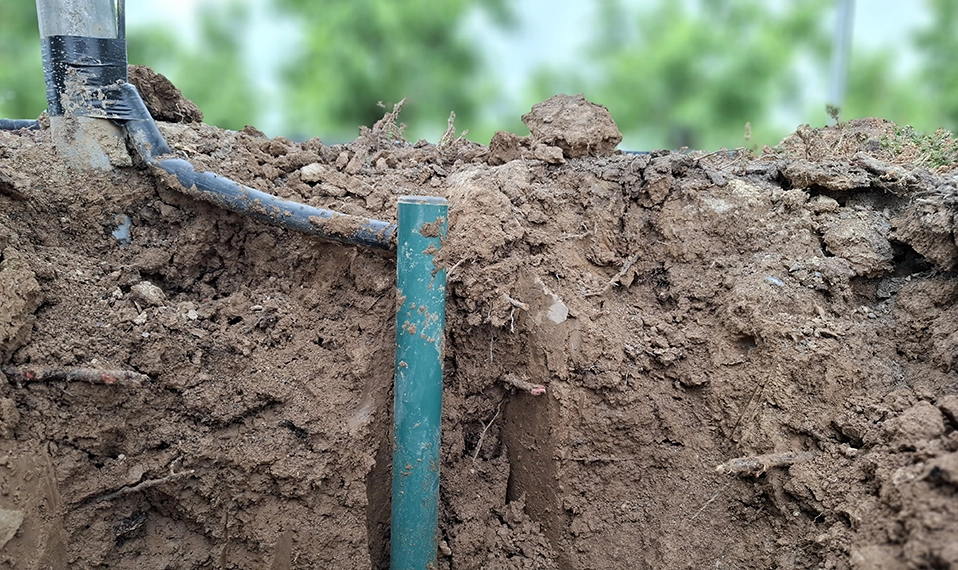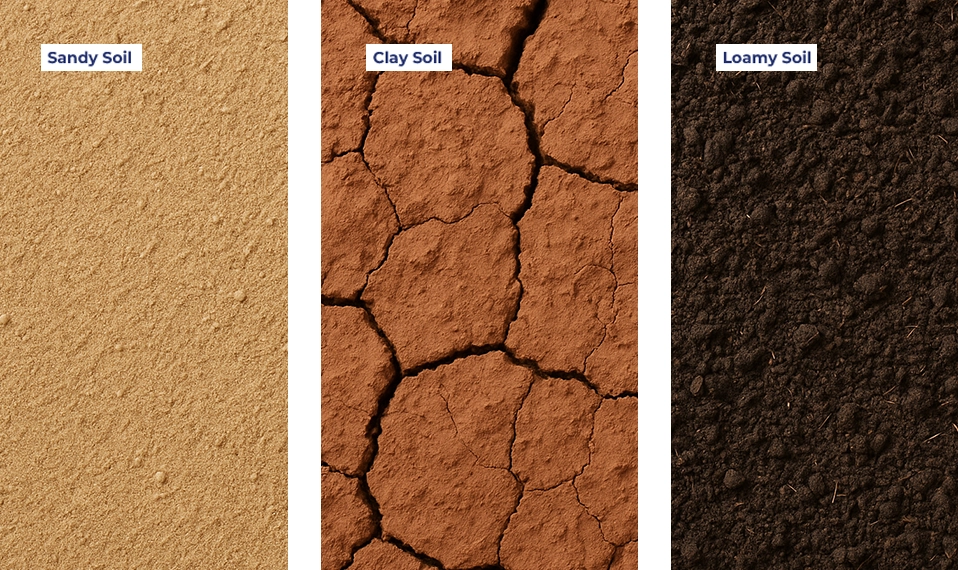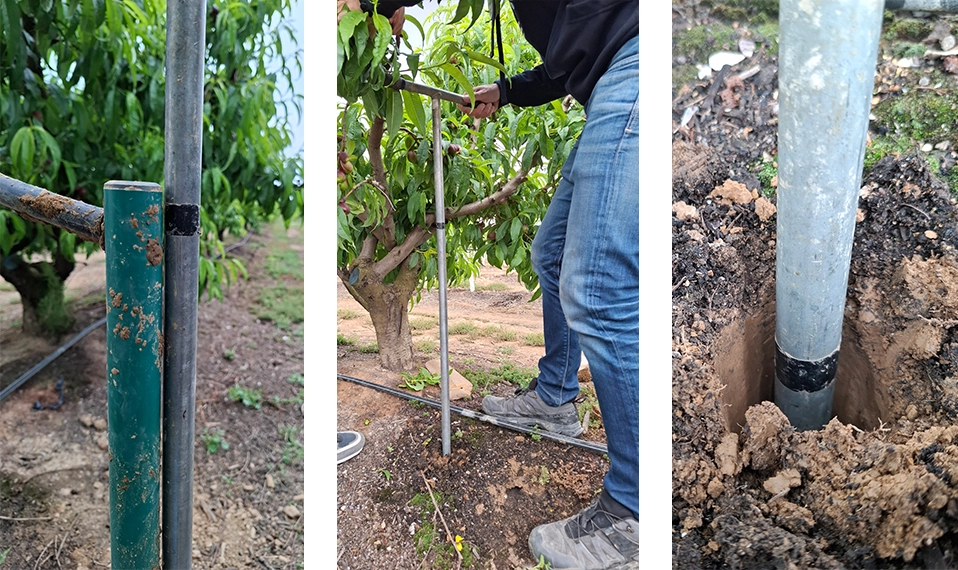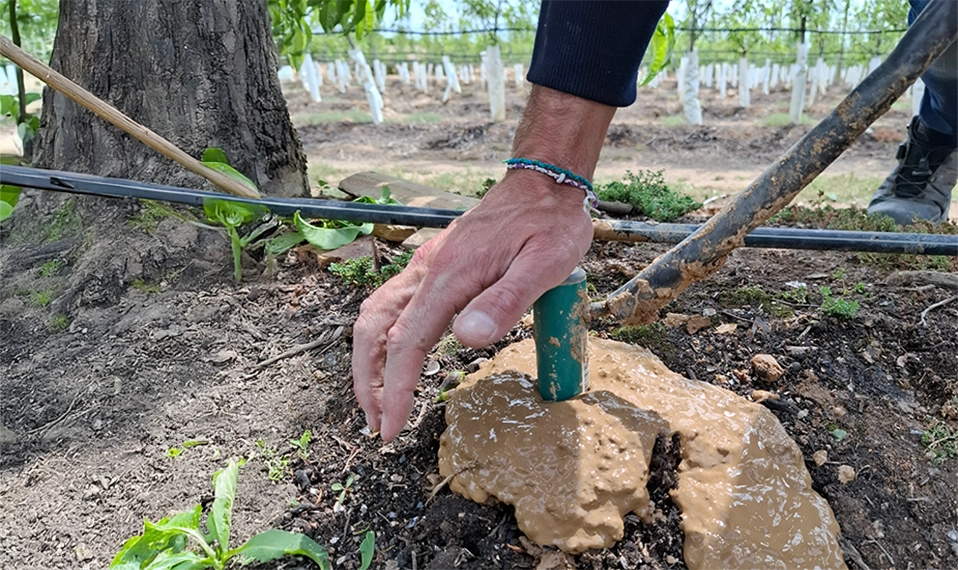The data you don’t see: why soil sensors are your best ally.
Irrigation is one of the most important factors in crop productivity. But if it’s not managed properly, it can lead to significant waste of water, nutrients, and energy.
Using precision soil moisture monitoring technology is a powerful way to make better irrigation decisions. The readings collected by multilevel soil sensors are analyzed in the SPHERAG platform, delivering clear, visual data that matches your crop’s real needs. This helps optimize water use, prevent over-irrigation, and protect plants from water stress.

Benefits of installing a multilevel soil sensor
Unlike a single-depth moisture probe, a multilevel soil sensor measures Volumetric Water Content (VWC) and temperature at different depths, giving you a detailed picture of what’s happening underground. This allows you to:
- Pinpoint the active root zone. As crops grow, their roots expand to different depths. A multilevel sensor shows you exactly where they are so water and nutrients go where they’re needed.
- Track irrigation depth. See in real time how far water penetrates the soil—and whether it’s reaching the root zone or draining away.
- Timing your watering perfectly. By knowing the values for field capacity and the permanent wilting point, you can avoid both water stress and overwatering by irrigating at just the right time.
Soil texture: key for irrigation decisions
Understanding your soil texture is critical for interpreting sensor data. Soil texture—the ratio of sand, silt, and clay—determines water-holding capacity:
- Sandy soils: Large particles, low water retention.
- Clay soils: Small particles, high water retention.
- Loam soils: Balanced texture with excellent retention and aeration.
Many fields have a mix of textures, which can change at different depths.

Saturation, field capacity, and wilting point
These are essential terms for understanding soil water availability:
- Saturation: All soil pores are filled with water; roots may suffocate due to lack of oxygen.
- Field capacity: The ideal balance—pores hold water, but excess has drained away, leaving air for roots to breathe.
- Wilting point: Water is so tightly held in the soil that plants can’t absorb it, leading to stress.
A multilevel sensor helps you track these stages so you can irrigate at the right time.
How to install a multilevel soil sensor (step-by-step)
Proper installation is key to getting accurate readings:
- Choose the right location: Place the sensor within the root zone, about 4–6 inches from the irrigation emitter.
- Prepare the hole: Use an auger to drill to the required depth. Collect the soil, sift it, and mix with water to make a smooth slurry.
- Insert the sensor: Fill the hole with the slurry for good contact, then insert the probe vertically and secure it.


Using SPHERAG grower software for smarter irrigation decisions
One of the biggest advantages of SPHERAG’s grower software is how it turns complex sensor readings into easy-to-understand visuals. The platform processes your multilevel soil sensor data and displays it in clear charts so you can:
- See your crop’s water consumption trends.
- Know exactly when and how much to irrigate.
- Target water application precisely where it’s needed.
This makes SPHERAG the irrigation management solution of choice for farmers looking to save water, reduce energy costs, and maximize yields in a sustainable way.
Ready to take your farm’s irrigation to the next level? Contact SPHERAG today to discover how our smart irrigation solutions can help you cut costs and boost productivity.